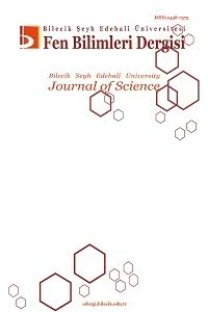Performance Analysis of Combined Cycle Power Plant with Multi-Effect Distillation (MED) Desalination Process
Performance Analysis of Combined Cycle Power Plant with Multi-Effect Distillation (MED) Desalination Process
___
- [1] Mohamed, E.S.,Boutikos, P.,Mathioulakis,E., Belessiotis,V.,(2017).Experimental evaluation of the performance and energy efficiency of a Vacuum Multi-Effect Membrane Distillation system, Desalination, 408, pp. 70-80
- [2] Chacartegui, R., Sanchez, D., Di Gregorio, N., Jiménez-Espadafor, F. J., Munoz, A., & Sanchez, T., (2009). Feasibility analysis of a MED desalination plant in a combined cycle based cogeneration facility, Applied thermal engineering, 29(2-3), 412-417.
- [3] Almutairi, A., Pilidis, P., Al-Mutawa, N., & Al-Weshahi, M. (2016).Energetic and exergetic analysis of cogeneration power combined cycle and ME-TVC-MED water desalination plant: Part-1 operation and performance, Applied Thermal Engineering, 103, 77-91.
- [4] Sayyaadi, H., & Saffari, A. (2010).Thermoeconomic optimization of multi effect distillation desalination systems, Applied Energy, 87(4), 1122-1133.
- [5] Hosseini, S. R., Amidpour, M., & Shakib, S. E., (2012). Cost optimization of a combined power and water desalination plant with exergetic, environment and reliability consideration, Desalination, 285, 123-130.
- [6] Voutchkov,N., (2013). Desalination Engineering: Planning and Design 1st Edition, McGraw-Hill Education, 1 edition, New York.
- [7] Sommariva, C., (2010). Desalination and Advanced Water Treatment Economics and Financing, Balaban Desalination Publications, Rome - Italy.
- [8] Al-Mutaz,I.,Al-Namlah,A.,(2004).Characteristics of dual purpose MSF desalination plants, Desalination,166,287–294.
- Yayın Aralığı: 2
- Başlangıç: 2014
- Yayıncı: BİLECİK ŞEYH EDEBALİ ÜNİVERSİTESİ
Bilecik İli Hayvansal Atıklarının Biyogaz Potansiyelinin İncelenmesi
Emin AÇIKKALP, Süheyla YEREL KANDEMİR
Bilecik İli Hayvansal Atıklarının Biyogaz Potansiyellerinin İncelenmesi
Suheyla YEREL KANDEMİR, Emin AÇIKKALP
Silindir Etrafındaki Kararsız Akışın Farklı Türbülans Modelleri ile Sayısal Olarak İncelenmesi
Multi-Criteria Decision- Making Modeling of b-type ORCBinary Geothermal Power Plant: EATWOS Analysis
Aslı ERGENEKON ARSLAN, Merve ŞENTÜRK ACAR, Oğuz ARSLAN
Multi-Criteria Making-Decision Modeling of b-type ORC-Binary Geothermal Power Plant: EATWOS Analysis
Oğuz ARSLAN, Aslı ERGENEKON ARSLAN, Merve ŞENTÜRK ACAR
